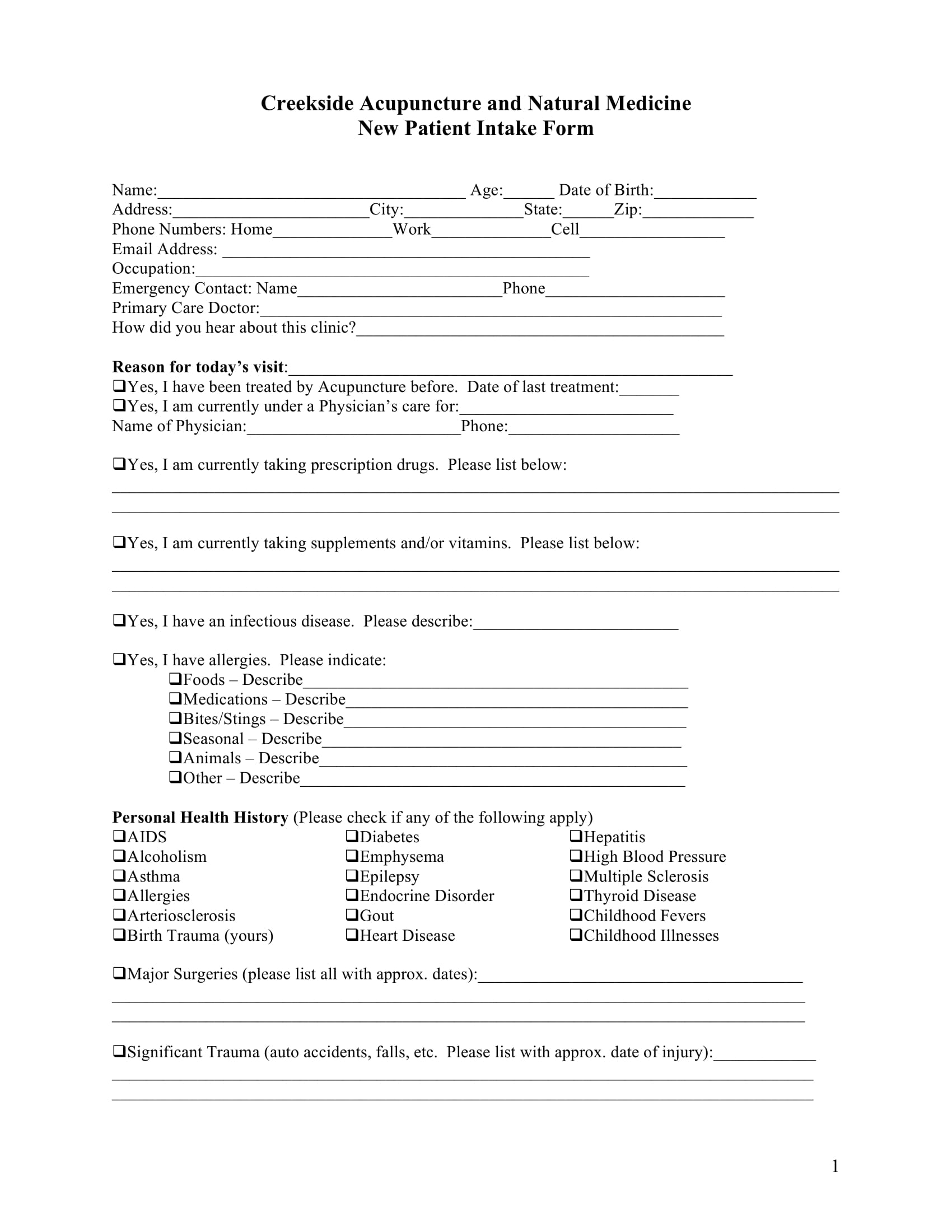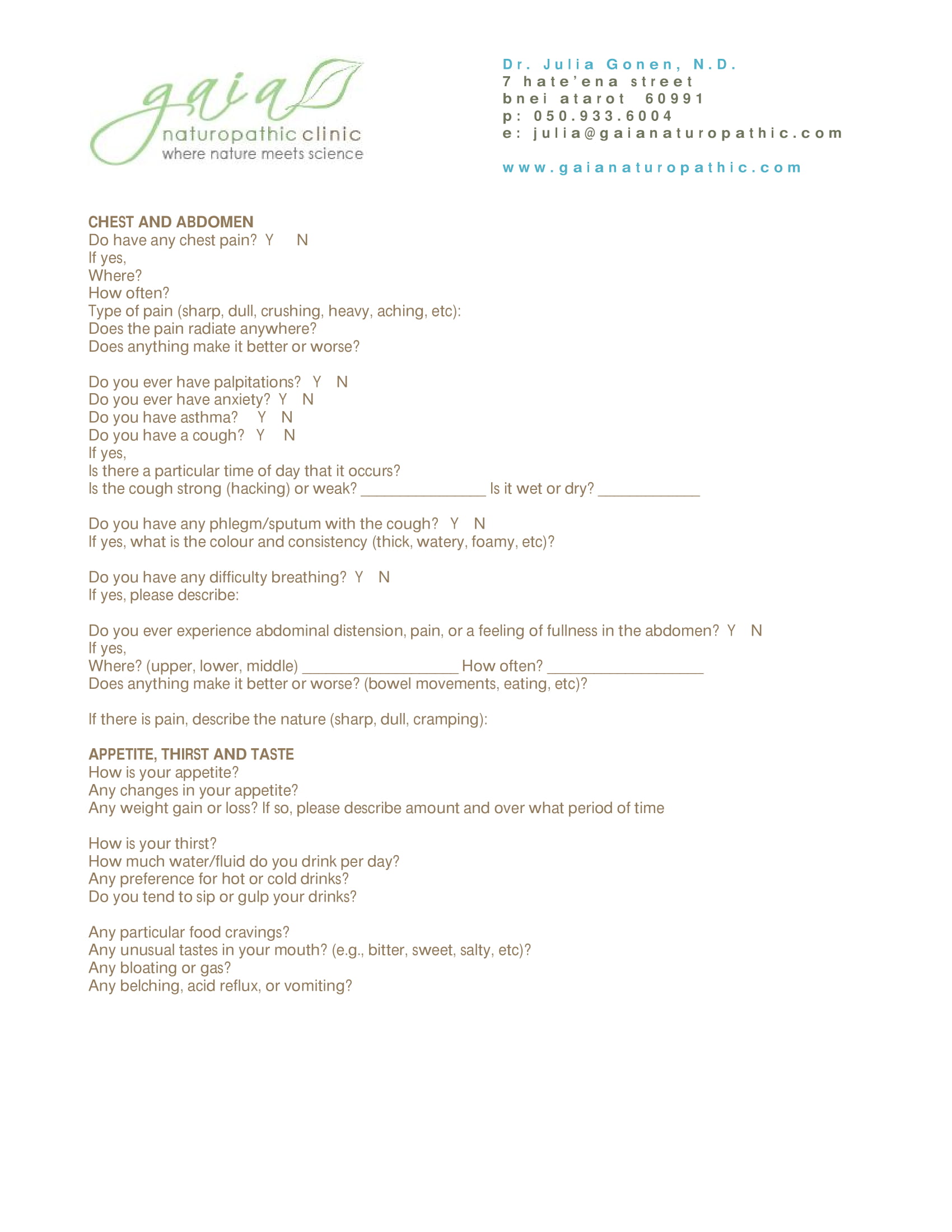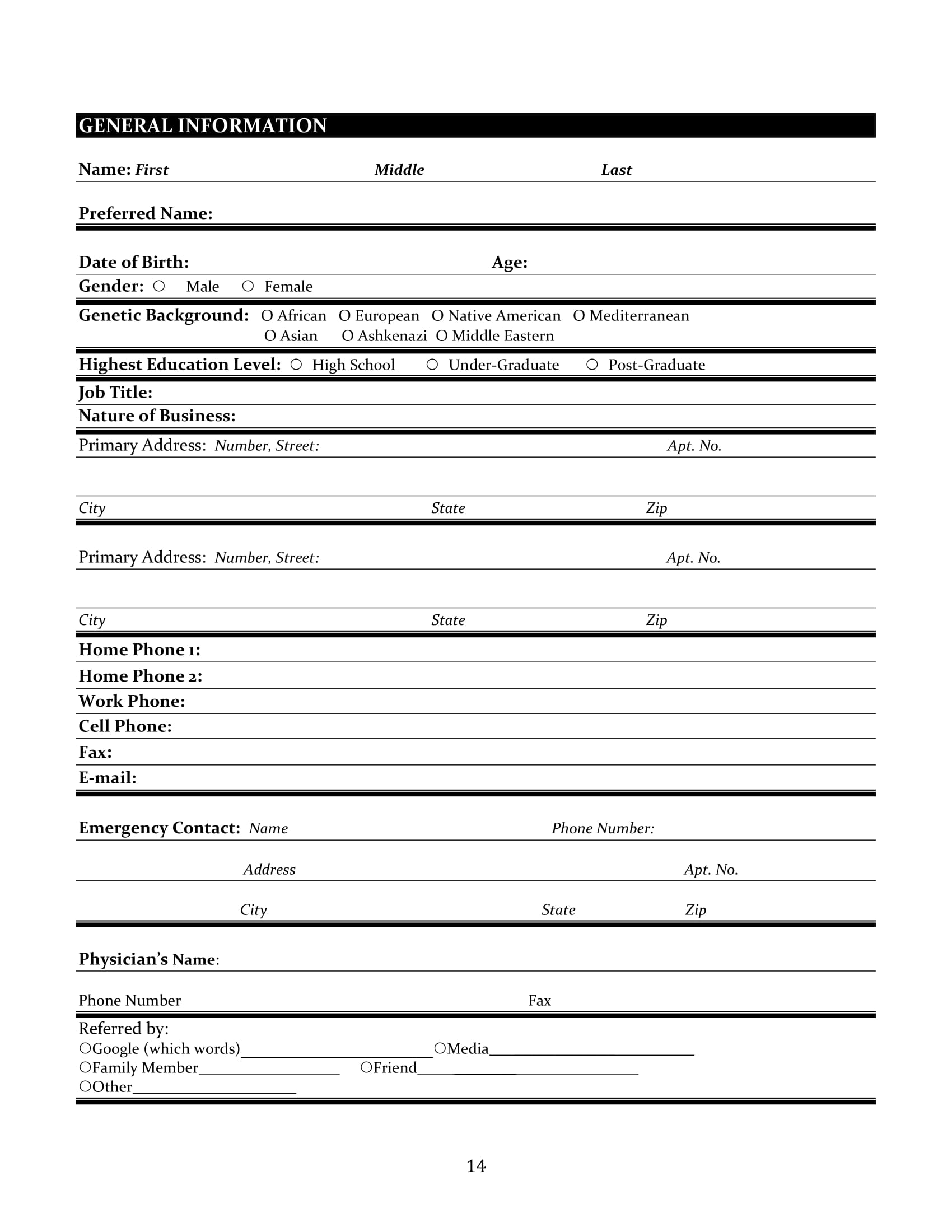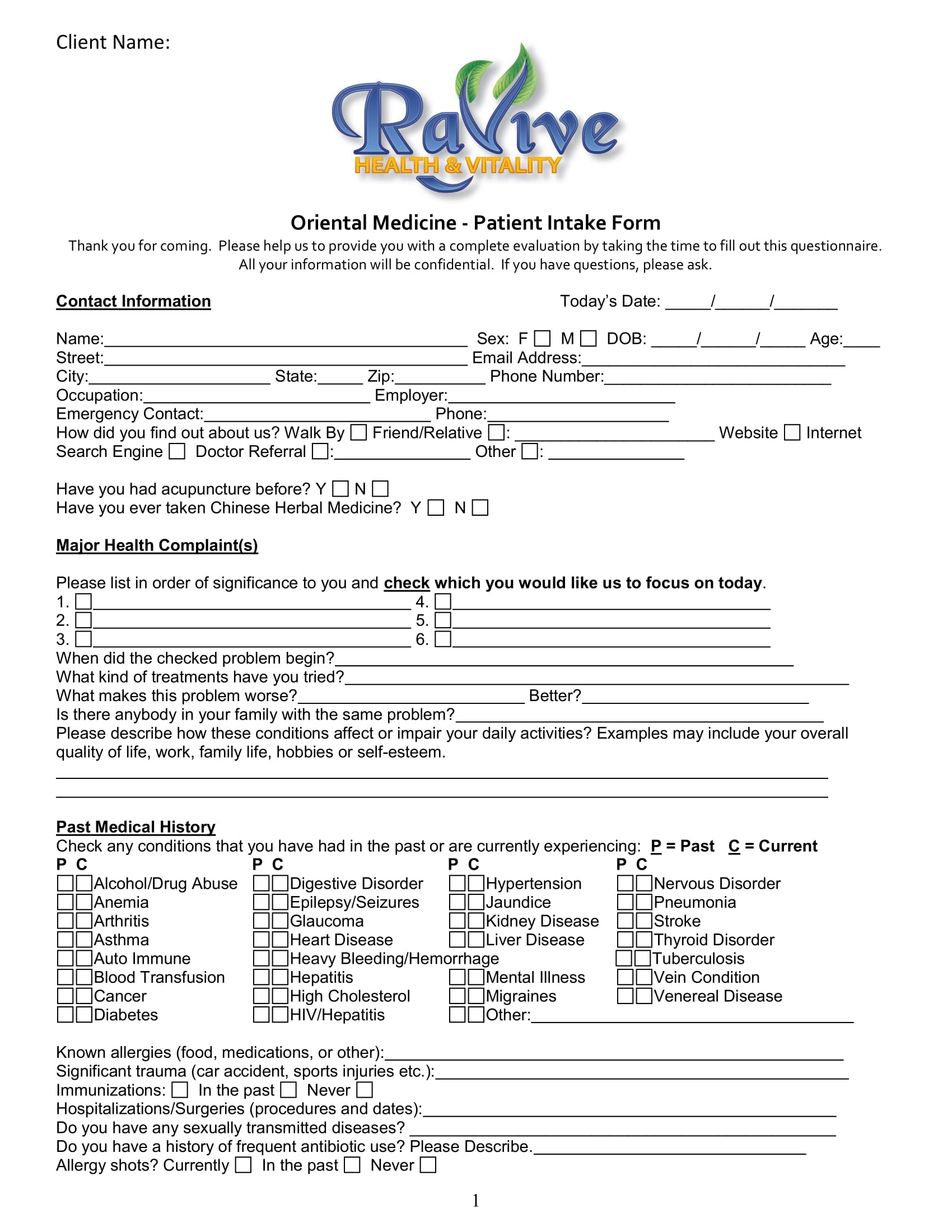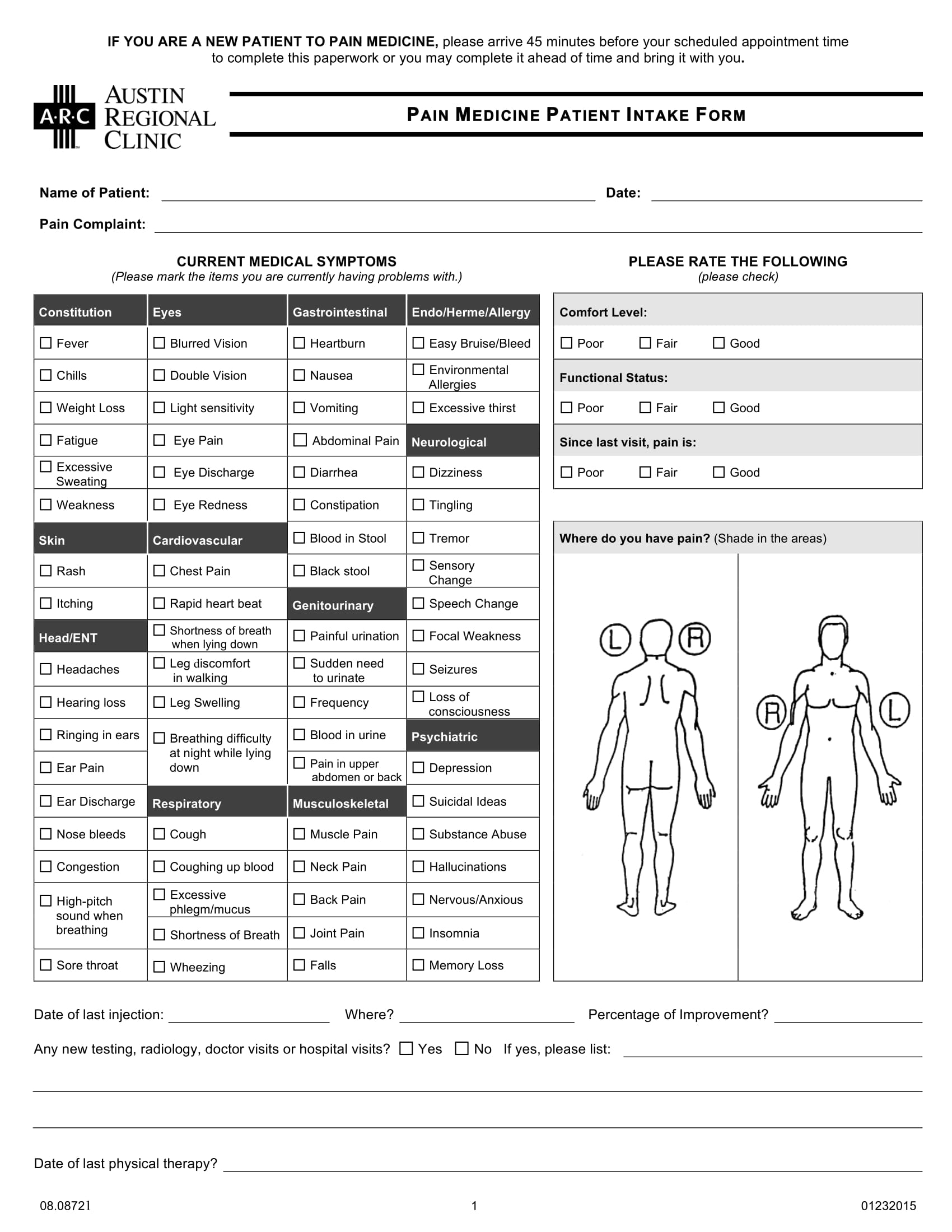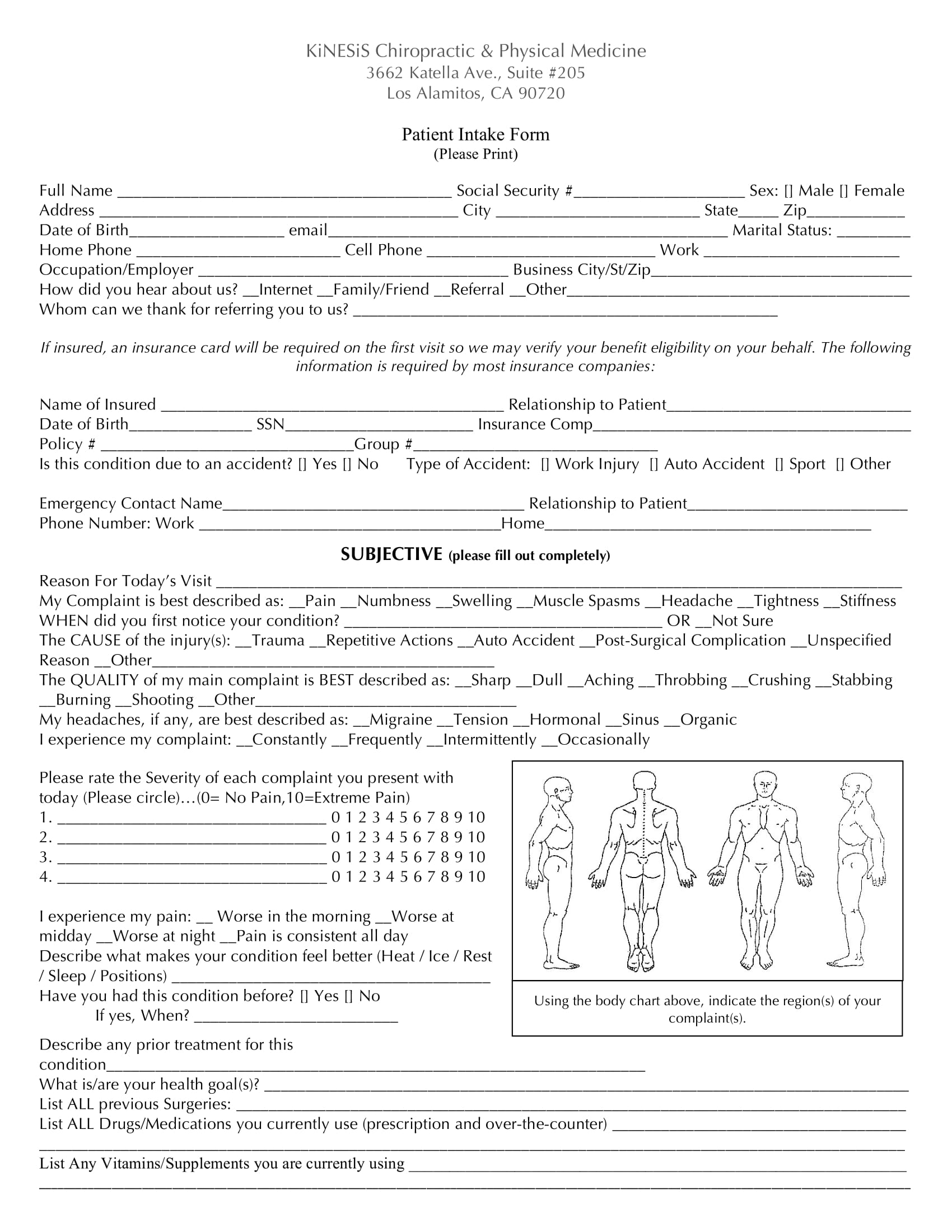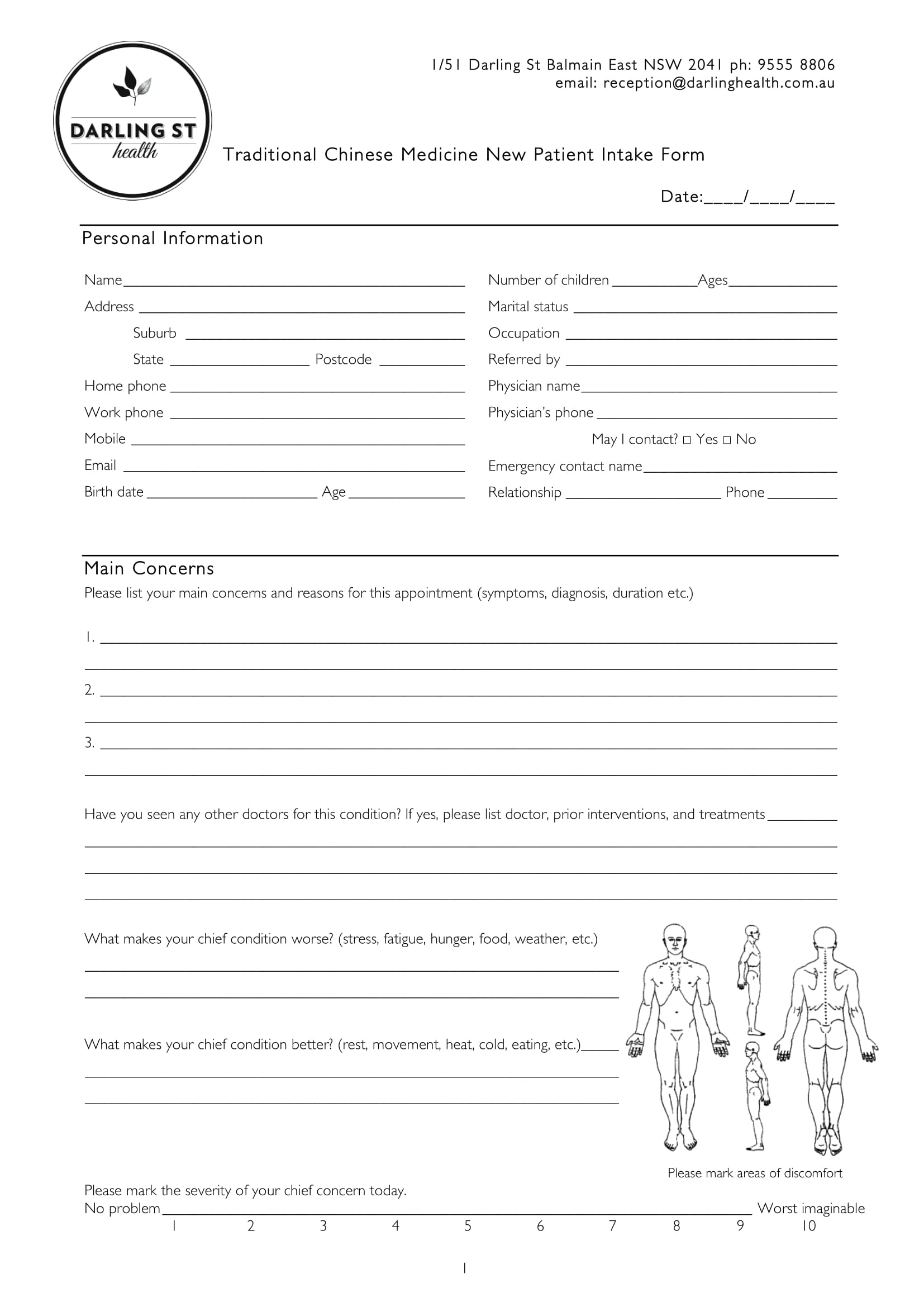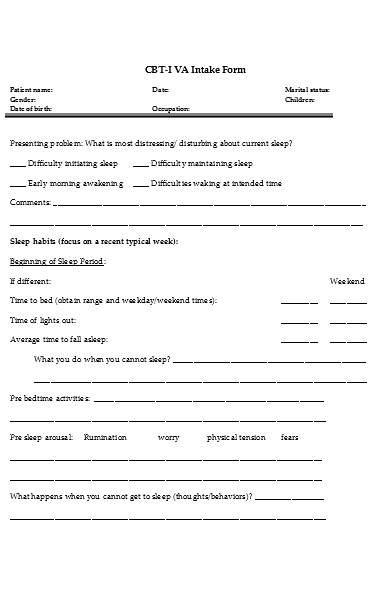A medicine patient intake form is a document that gathers the patient’s information and history. The main users of the form are those patients who seek alternative medicine such as acupuncture and craniosacral therapies. The form will aid the medicine practitioner to determine what areas of the patient’s body need to be addressed with a cure. Basically, the form serves as a tool for assuring that the patient and the practitioner both understand each other’s roles, obligations, and expectations.
Acupuncture Natural Medicine Patient Intake Form
Chinese Medicine Patient Intake Form
Functional Medicine Adult Patient Intake Form
Varieties of Medicine Patient Intake Forms
The varieties of medicine patient intake forms depend on what type of alternative medicine will be provided to the client or patient. Below are some of the examples of this form:
- Acupuncture Natural Medicine Patient Intake Form – Alleviating a patient’s pain by pricking needles unto the area where the pain is evident is what acupuncture is all about. With this, the patient will be provided with an acupuncture natural medicine patient intake form by the acupuncturist. The form will cater the personal information of the patient, the reasons of why he/she visited the clinic, as well as the patient’s health history.
- Chinese Medicine Patient Intake Form – This form generally contains questions where the patient will need to provide with sufficient answers about his/her health condition. Questions relating to the patient’s body system review, illness, diseases, and even the patient’s appetite are included in this form.
- Sports Medicine New Patient Intake Form – This form is mainly provided to athletes who have been injured due to their performance in their field of sports. The completed form will be submitted to a sports medicine physician who will administer medical exams and procedures to the athlete.
Internal Medicine Patient Information Intake Form
Oriental Medicine Patient Intake Form
Pain Medicine Patient Intake Form
Contents Found in a Medicine Patient Intake Form
Although there are tons of varieties, medicine patient intake forms have significant sections and contents that need to be included in the form regardless of the variety or type. Listed below are the essentials contents found in any medicine patient intake form:
- Patient Information – This is where the patient will be able to disclose his/her general information which will aid the practitioner in identifying him/her. Basically, this section can cater the patient’s name along with a summary of his/her pain complaints. However, some practitioners will require the patient to include his/her date of birth, gender, genetic background, and even the patient’s job information.
- Current Medical Symptoms – This section is often found in a checklist format where the patient will have to mark the symptoms that he/she is experiencing prior to the day of the therapy or consultation. This includes the patient’s eye, cardiovascular, as well as the patient’s neurological concerns.
- Patient Status Rating – A rating scale intended to determine how the patient is feeling is the content of this section. The patient will have to indicate his/her comfort level along with his/her functional status, and the level of his/her pain from his/her last visit to the consultant or clinic.
- Pain Diagram – This is common in most medical intake forms wherein a diagram is presented to the patient in order for him/her to shade the areas where he/she is feeling intense pains. A diagram of a person in front and back views are available in this section.
- Therapy Patient Questionnaire – A list of questions are indicated in this section which will gather the patient’s answers regarding his/her last visit to the therapist such as when his/her last injection was given, the percentage of his/her improvements, and the specific medical examinations that the patient acquired currently.
- Pain Assessment – This section focuses on the details and the patient’s description for the pain that he/she is experiencing. Ten separate subsections are provided which includes the location of the patient’s pain along with the pain orientation, the frequency of the pain occurrence, and the factors that trigger the pain. Additionally, the patient must also state the date of when the pain started and whether he/she was diagnosed with the same medical condition from his/her previous years or not.
- Medical History – In this medical history section, the patient needs to disclose the name of his/her primary care provider in the first area which will then be followed by the list of diagnosis he/she acquired from the doctor. The medical history will allow the practitioner to acknowledge the underlying medical issues that were the possible causes of the patient’s pain, as well as determine what substances or medical drugs are not meant to be taken by the patient.
- Surgical History – A checklist is presented in this section that centers on the varieties of surgeries. The patient will have to mark the box associated with the surgeries that he/she had previously. The importance of knowing the patient’s surgical history is to distinguish if the pain of the patient was due to a surgical complication or not.
- Family History – This is where the patient will have to indicate his/her family or genetic medical history beginning from the patient’s mother to his/her grandparents. However, if the patient is adopted and does not have any idea who his/her blood-related family members are, then he/she will only have to mark the box with an “adopted” label to inform the practitioner.
- Social History – This refers to the patient’s social activities, hobbies, and routine. The patient needs to disclose whether he/she is a tobacco user, an alcohol addict, as well as whether he/she uses illegal drugs and if he/she is sexually active or not.
- Informed Consent Agreement – This section consists of two legal aspects which are the consent to treat statement and a therapy agreement. The consent to treatment or informed consent statement is necessary for indicating that the patient has been fully informed about the limitations and the process of the treatment that he/she requested from the practitioner. On the other hand, the agreement is intended to enlist the terms and conditions of the practitioner relating to the range of services that he/she can offer to the client. Payment methods and obligations are also included in the agreement along with the practitioner’s cancellation policies. Once the client agrees to the stated terms and conditions, he/she needs to affix his/her signature on the provided space to signify his/her agreement as well as the date of when he/she completed the intake form.
Physical Medicine Patient Intake Form
Sports Medicine New Patient Intake Form
Traditional Chinese Medicine New Patient Intake Form
New Medicine Patient Intake Form
Importance of Medicine Patient Intake Form
Medicine patient intake forms are important to any alternative medicine practitioner since this allows them to know more about their clients or patients. The form also serves as an instrument for the practitioner to inform the client about policies and rules to be observed. Additionally, the client will also be able to lay down his expectations and needs on the form which will allow the practitioner to determine procedures of how he/she can meet his/her client’s preferences.
Related Posts
-
New Patient Intake Form
-
Client Intake Form
-
FREE 21+ Counseling Intake Forms in PDF | MS Word
-
FREE 4+ Therapy Intake Forms in PDF | MS Word
-
FREE 4+ Project Intake Forms in PDF | MS Word
-
Massage Intake Form
-
Coaching Intake Form
-
FREE 4+ Event Planning Intake Forms in PDF | MS Word
-
FREE 7+ Medical Intake Forms in PDF
-
FREE 10+ Sample Assessment Intake Forms in MS Word | PDF

